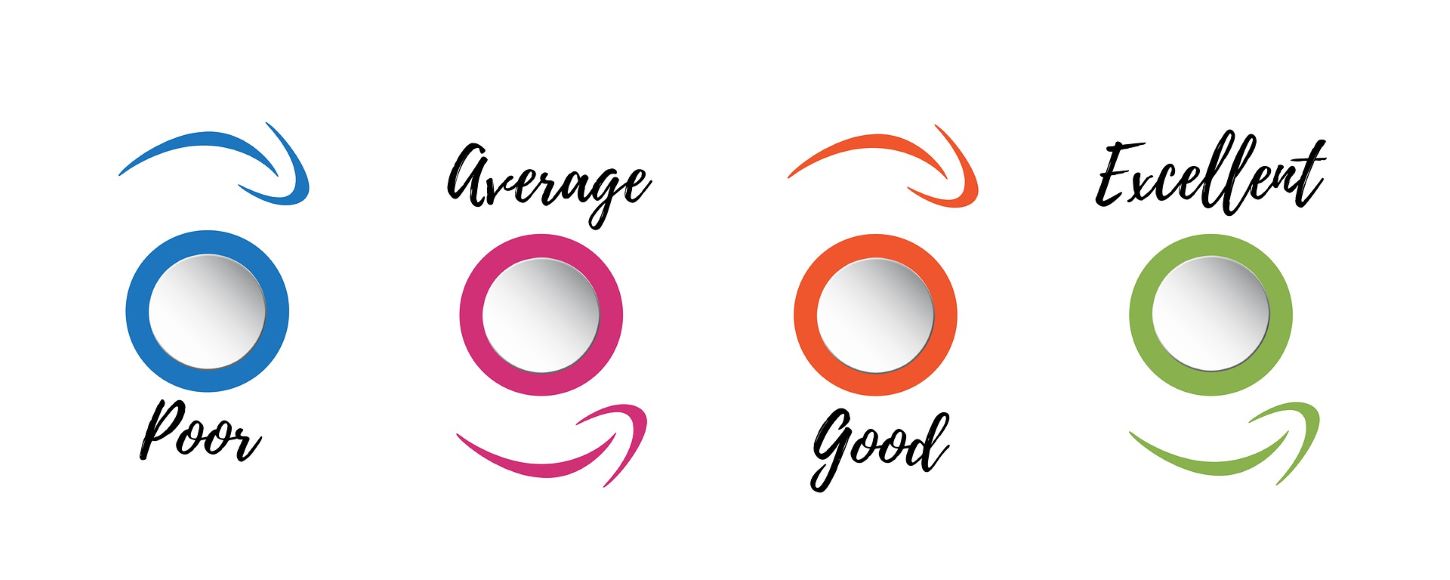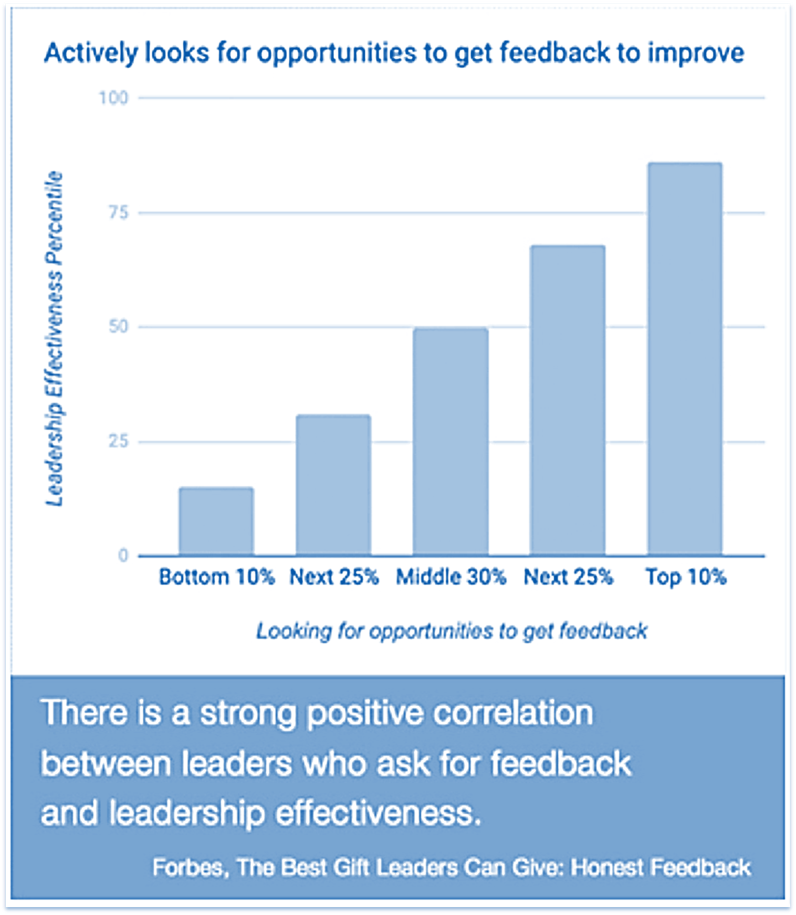
We Need To Talk: The Power of Effective Feedback
“We need to talk.” You hear or read those words from your boss and cold shivers go down your back. A knot develops in your throat and drops to your stomach where it stays until the talk with your boss happens – and it may not go away then. Sound familiar? Conversations between bosses and employees do not have to be this way. This is where giving and receiving effective feedback between managers and employees plays a role.
This Forbes article states strong employee engagement is closely aligned with the ability to give honest feedback in a helpful way. A 2013 study (see graph below) of 22,719 leaders showed that those who ranked at the bottom 10% in their ability to give honest feedback to direct reports received engagement scores from their subordinates that averaged 25%.

Do you think the bottom 35% of these employees were actively seeking other employment? Possibly. Giving feedback is a good thing but it must be delivered well, at the right time, in the proper setting, and done consistently. If a relationship of trust is not established – and this takes time – between a manager and employee, then it is highly likely that feedback given by the manager can be taken as punitive instead of helpful. So how do we build an environment of effective feedback? Let’s explore:
- Trust must be built.
- Good leaders give and ask for feedback.
- Feedback must be delivered in the right way, at the right time, and in the right setting.
- Feedback must be consistent.
Building Trust
President Theodore Roosevelt said, “People do not care what you know until they know that you care.” Good leaders are not afraid to be transparent with their employees. They admit their faults and let their employees see that they are imperfect human beings. That is the first step in building the trust relationship.
I still remember the first manager I had who was like this and I nearly fell out of my chair when he told me about his transparency, imperfections, and how he wanted me to talk with him about his leadership skills. What?! What formed out of that relationship was a long-lasting work relationship with countless successes and raising up many other leaders. Building trust also includes doing what you say you are going to do and ensuring your employees are heard when they talk with you. An important note here – employees don’t have to be right but they do need to be heard.
Giving & Asking for Feedback
Managers giving feedback may not sound foreign to you but managers asking for feedback from their employees may. CLG calls this ‘The Effective Feedback Flow’: managers giving effective feedback to employees and employees providing effective feedback to managers. Let’s break it down…
Giving feedback. Here are some basic types of feedback that should be given from the manager to the employee:
- A strength or skill manager notices employee has and works with employee to develop it.
- Reframes missteps and problem solves with employee.
- Celebrates successes with employee.
- Shares impact employee has on company – could be good or bad.
Receiving feedback. Again, good leaders ask for and expect feedback from their employees. Here are some basic types of feedback that should be given from the employee to the manager:
- Time management skills.
- Communication skills.
- Overall leadership skills, be specific.
- Impact on the team/organization/employees – could be good or bad.
Right Way, Right Time, Right Setting
For managers giving feedback to employees, the method of delivery, time, and place all depend on what type of feedback is to be given. Some feedback should be given in private and some feedback can be given casually. Try to make the place feedback occurs as neutral as possible and don’t give it from behind your office desk. Give feedback in a timely way so that it is effective – an employee should not hear about something that happened several months ago that they need to improve or that they did well.
For employees giving feedback to managers, the method of delivery, time, and place should, most times, be somewhat formal and in private. Make sure it happens in a neutral place so the employee feels comfortable.
Be Consistent
Effective feedback must be consistent. This builds rapport and trust between managers and employees and even creates a more “comfortable” environment for giving and receiving feedback. When is the last time you gave an employee feedback or asked for it? Work gets done every day and your employees have skills and talents ready to be tapped into, so you have plenty of opportunities for effective feedback to happen. Stop for a minute and think about some opportunities before you right now. Make a plan and follow through with it.
CLG offers training for giving and receiving effective feedback. We only covered the high points in this blog…there is so much more to consider. Contact us today to sign up for our Effective Feedback workshop and begin working towards strengthening your employee growth and engagement today.
-Melissa Spangler
